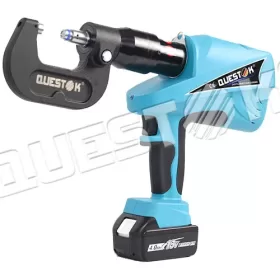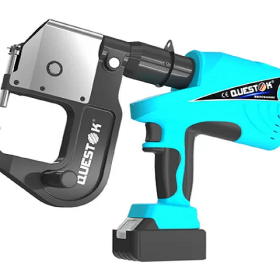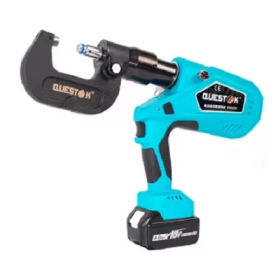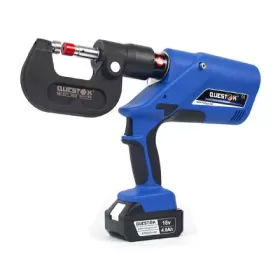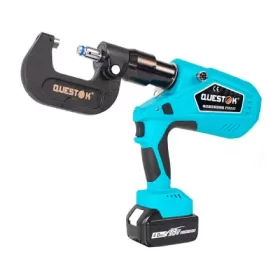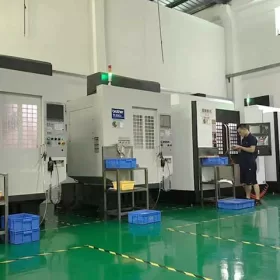Cold Riveting in Aerospace- Enhancing Safety and Performance
Cold riveting is an innovative fastening technique that has gained significant traction in the aerospace industry, owing to its unparalleled safety and performance advantages. Unlike traditional hot riveting, which involves heating the rivets, cold riveting employs a controlled mechanical process to deform and secure rivets at room temperature. This transformative technology has revolutionized aerospace manufacturing, offering a plethora of benefits that enhance safety, reduce production time, and optimize overall aircraft performance.
Safety Enhancement
The absence of heat in cold riveting eliminates the risk of fire and explosion, ensuring a safer work environment for personnel. The absence of thermal expansion also minimizes the distortion of components, reducing the potential for stress concentrations and structural failure. Moreover, the controlled process ensures consistent rivet quality, eliminating the variability associated with traditional hot riveting, thereby enhancing structural integrity and flight safety.
Performance Optimization
Cold riveting enables the use of advanced materials, such as composite materials, which are sensitive to heat. This versatility empowers engineers to design lighter and more aerodynamic aircraft, improving fuel efficiency and overall performance. The absence of heat also minimizes embrittlement, preserving the strength and durability of materials. Furthermore, cold riveting reduces noise and vibration, enhancing passenger comfort and overall flight quality.
Enhanced Design Flexibility
The controlled nature of cold riveting allows for precise placement and alignment of rivets, enabling complex joint configurations and innovative designs. This flexibility facilitates the integration of advanced materials and promotes weight reduction, contributing to enhanced aircraft efficiency and performance. Additionally, the reduced cycle time associated with cold riveting enables rapid prototyping and design iterations, accelerating the development process.
Improved Production Efficiency
Cold riveting eliminates the need for heating and cooling cycles, significantly reducing production time and enhancing efficiency. The automated nature of the process ensures high consistency and repeatability, minimizing human error and reducing scrap rates. Moreover, the use of robotic systems for cold riveting enables precise and consistent operations, further enhancing productivity.
Environmental Considerations
Cold riveting eliminates the need for hazardous materials, such as fluxes and coatings, reducing environmental impact. By minimizing energy consumption and waste generation, cold riveting aligns with sustainable manufacturing practices and promotes environmental conservation. Additionally, the use of lighter materials, facilitated by cold riveting, contributes to reduced carbon emissions and a greener aerospace industry.
Conclusion
Cold riveting has revolutionized aerospace manufacturing, delivering unparalleled safety, performance, design flexibility, production efficiency, and environmental benefits. The absence of heat, precise control, and enhanced quality ensure the highest levels of structural integrity and operational reliability. As the adoption of cold riveting continues to expand, it is poised to transform the future of aerospace manufacturing, propelling the industry toward safer, more efficient, and environmentally conscious aircraft.
- Company News
- Industry News
- Tag
- Tags
-
The Advantages of Questok Rivet Guns: Precision, Efficiency, and Durability
In industrial fastening applications, the choice of tools directly impacts productivity, safety, and long-term cost-effectiveness. Questok rivet guns have emerged as a standout solution for professionals across aerospace, automotive, and construction sectors. Combining advanced engineering with user-centric design, these tools deliver unmatched performance. Below are the key advantages that make Questok rivet guns a preferred choice:
-
Rivet Gun FAQ
Rivet Gun FAQ-SPR
-
Fast Assembly and Repair With Cordless Solid Rivet Gun
Questok cordless solid rivet gun stands out as a pivotal innovation, merging portability with power to facilitate efficient and effective fastening in a myriad of applications.
-
Redifine The Role of Self-piercing Riveting Gun Machine
Self-piercing riveting adopts high-speed mechanical fastening skill that joins thin sheet materials, typically steel and aluminum alloys.
-
The Latest Innovations in Clinching Tool Design
Explore the latest innovations in clinching tool design, redefining precision, efficiency, and versatility in material joining.
-
The Application and Maintenance of Self-Piercing Rivet Guns
Delve into the applications of self-piercing rivet guns in the automotive and aerospace industries and reveal the essential maintenance practices that ensure their accuracy and efficiency.
-
Rivetless Riveting Gun for Ventilation Duct Projects
The ventilation duct rivetless gun is a tool for riveting ventilation ducts without rivets.
-
Guide to Using Self-Piercing SPR Riveting Gun
In the automotive industry, self-piercing SPR (Self-Piercing Rivet) riveting guns are commonly used for joining metal components in vehicle bodies, including BMW vehicles.
-
Rivet Gun FAQ
Rivet Gun FAQ-SPR
-
Versatile Fastening- Applications of the Handheld Rivet Gun Across Industries
In the realm of fastening, the handheld rivet gun stands as a testament to ingenuity and versatility. Its ability to effortlessly join materials with sheer strength and permanence has revolutionized manufacturing and construction processes, leaving an enduring mark on diverse industries. Aerospace: Where precision and reliability are paramount, the rivet gun shines. In aircraft assembly, […]
-
Time-Saving Tools- Speeding Up Projects with Electric Blind Rivet Guns
In the whirlwind of project deadlines, every minute counts. But what if there was a tool that could dramatically reduce assembly time, giving you an edge in the race against the clock? Enter the electric blind rivet gun: your secret weapon for lightning-fast and effortless riveting. Electric blind rivet guns are the ultimate time-savers for […]
-
Streamlining Fastening- How an Electric Blind Rivet Gun Enhances Efficiency
Introduction In the realm of manufacturing and assembly, fastening plays a crucial role in securing components and ensuring structural integrity. Traditional manual rivet guns, while reliable, are often time-consuming and labor-intensive. The advent of electric blind rivet guns has revolutionized the fastening process, significantly enhancing efficiency and productivity. This article delves into the benefits of […]
-
The Role of Automation in Electric Rivetless Clinching
Electric rivetless clinching (ERC) is a lightweight joining process that eliminates the need for rivets or other fasteners. This can lead to significant cost savings and increased production efficiency. Automation plays a critical role in ERC, enabling high-speed and high-volume production. Automated Feed Systems Automated feed systems are used to accurately position the two workpieces […]
-
Why Choose a Universal Self-Piercing Riveting Gun for Your Projects?
In the realm of construction and fabrication, riveting guns stand as indispensable tools for creating secure and robust connections. Among the various types available, universal self-piercing riveting (SPR) guns have emerged as a game-changer due to their versatility and efficiency. This article will delve into the compelling reasons why choosing a universal self-piercing riveting gun […]
-
Why Choose Stainless Steel Hollow Rivets for Your Projects?
In the world of industrial manufacturing, choosing the right fasteners for your projects is crucial for ensuring longevity and reliability. Among the many options available, stainless steel hollow rivets stand out as a superior choice for a wide range of applications. This article delves into the compelling reasons why stainless steel hollow rivets are the […]
-
Top Trends in Electric Rivetless Clinching Guns
In the realm of fastening technology, electric rivetless clinching guns have emerged as a revolutionary solution for a wide range of industrial applications. These advanced tools offer several преимущества and capabilities, revolutionizing the way businesses approach their fastening needs. Adoption of Brushless Motors Brushless motors have gained significant traction in electric rivetless clinching guns due […]

